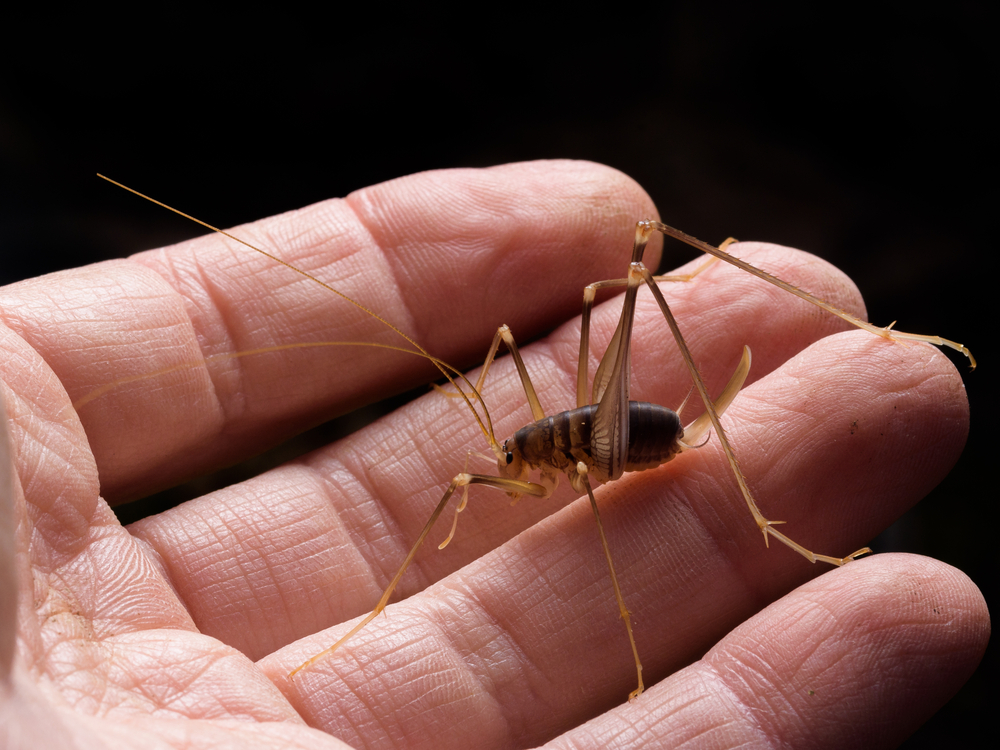


Cave crickets, also known as camel crickets or spider crickets, are a unique and intriguing species of insects that often find their way into our homes.
This comprehensive guide will explore the characteristics, behavior, habitat, diet, and interactions of cave crickets with humans.
We'll also compare them to other insects and delve into some fascinating facts about these mysterious creatures.
Cave crickets belong to the family Rhaphidophoridae and are found in various regions across the world.
They are characterized by their long, slender legs and antennae, which give them an uncanny resemblance to spiders. Additionally, their humpbacked appearance led to the nickname "camel cricket."
These crickets are native to various regions, including North America, Asia, and Europe.
Their natural habitats include caves, rock crevices, and other dark, damp environments.
While both cave and field crickets are members of the cricket order Orthoptera, they differ in several ways. Cave crickets lack wings and the ability to chirp, unlike field crickets.
Additionally, cave crickets are more likely to be found in damp, dark places like basements, whereas field crickets prefer grassy outdoor areas.
Some cave cricket species exhibit unique physical traits, such as albinism or translucence.
These rare crickets have adapted to their dark environments, and their unusual coloration may help them avoid predation.
Cave crickets vary in size depending on the species.
Most adults range from 0.5 to 1.5 inches in length, while some giant cave cricket species can reach up to 2 inches long.
| Species | Average Size (in inches) |
|---|---|
| Ceuthophilus | 0.5 - 1.25 |
| Dolichopoda | 0.75 - 1.5 |
| Giant Cave Cricket | Up to 2 |
Cave crickets have a distinctive appearance, with their long legs and antennae giving them a spider-like look.
Their bodies are usually brown or tan, although some species may exhibit unique coloration, such as albinism or translucence. They have large, rounded eyes and a humpbacked shape.
Cave crickets have six legs, with the hind legs being significantly longer and more powerful than the others. This allows them to jump great distances.
Unlike many other cricket species, cave crickets do not have wings, which means they cannot fly or chirp. Their large, rounded eyes help them navigate in low-light environments.
Cave crickets do not have the ability to produce sound like most other cricket species, as they lack wings with which to create chirping noises. However, they may make rustling noises when moving around in their environment.
Cave cricket infestations can be caused by several factors, including dampness, darkness, and readily available food sources.
To prevent or address infestations, homeowners should:
Cave crickets are usually found in dark, damp environments such as caves, crevices, and under rocks or logs.
They prefer areas with high humidity and will often seek out basements, crawlspaces, and other similar locations within human dwellings.
Basements provide the perfect environment for cave crickets due to their darkness, moisture, and food sources such as decaying plant matter, insects, and even fabrics.
As a result, these crickets will often migrate into basements in search of shelter and sustenance.
Cave crickets are primarily nocturnal, meaning they are most active during nighttime hours.
They may venture out during the day if disturbed or in search of food, but they generally prefer to remain hidden in their dark, damp habitats.
Cave crickets are omnivorous and will consume a variety of foods, including:
| Food Source | Examples |
|---|---|
| Plant Matter | Leaves, wood, fruit |
| Fungi | Mold, mushrooms |
| Insects | Ants, spiders, other crickets |
| Fabrics | Cotton, wool, silk |
While cave crickets will consume other insects, including spiders, they are not considered a primary food source.
However, they may eat spiders if other food sources are scarce.
Cave crickets have several natural predators, including:
Cave crickets themselves do not cause significant structural damage to homes.
Their presence may indicate a moisture problem that could lead to issues such as mold, wood rot, or pest infestations.
While cave crickets have powerful jaws used for consuming plant matter and insects, they are not known to bite humans.
They may jump towards a perceived threat in defense, but this behavior is more likely an attempt to startle predators rather than an act of aggression.
Cave crickets do not possess stingers and cannot sting humans. Any discomfort experienced from handling these insects is likely due to their strong legs and sharp claws, which can scratch the skin.
Cave crickets are not blind, but their vision is adapted for low-light environments.
Their large, rounded eyes help them navigate in the dark and detect potential threats or food sources.
Cave crickets may cause damage to clothing, particularly those made from organic fibers such as cotton, wool, or silk.
They are attracted to these materials as a food source, and their chewing can result in holes or frayed edges.
Camel crickets and cave crickets are often used interchangeably to describe the same species of cricket.
However, there are some regional differences in the terminology, with camel cricket being more commonly used in the United States and cave cricket being more prevalent in other countries.
Cave crickets and locusts are both members of the order Orthoptera, but they belong to different families and exhibit several differences.
Locusts are a type of grasshopper, while cave crickets are a distinct species. Locusts have wings and can fly, whereas cave crickets lack wings and are flightless.
Additionally, locusts are known for their swarming behavior and ability to cause significant damage to crops, while cave crickets do not swarm and do not pose a threat to agriculture.
While both cave crickets and stink bugs can be unwelcome guests in your home, they pose different concerns.
Cave crickets are primarily a nuisance due to their tendency to infest damp areas and potentially damage clothing.
Stink bugs, on the other hand, can release a foul odor when threatened or crushed, making them more challenging to manage.
Neither insect causes significant structural damage to homes.
The house cave cricket is a term used to describe cave cricket species that have adapted to living in human dwellings.
They can be identified by their humpbacked appearance, long legs and antennae, and lack of wings.
To manage an infestation, homeowners should focus on reducing moisture, sealing entry points, and removing potential food sources.
Cave crickets have been documented as early as the 18th century, with the first scientific description published in 1758 by Swedish naturalist Carl Linnaeus.
Since then, researchers have discovered numerous species and subspecies, with new discoveries still being made today.
The giant cave cricket, belonging to the genus Troglophilus, is the largest known cave cricket species.
These impressive insects can reach lengths of up to 2 inches, with their leg span exceeding 4 inches.
Cave crickets undergo incomplete metamorphosis, meaning they pass through three life stages: egg, nymph, and adult.
Females lay eggs in damp soil or crevices, which then hatch into nymphs that resemble smaller versions of the adults.
Nymphs molt several times as they grow, eventually becoming mature adults capable of reproduction. The entire life cycle typically takes around one year.
| Life Stage | Duration |
|---|---|
| Egg | 2-3 months |
| Nymph | 6-8 months |
| Adult | 3-6 months |
While not commonly consumed in Western cultures, cave crickets are eaten in some parts of the world, particularly in Asia.
They are a good source of protein and may be prepared in a variety of ways, such as fried, roasted, or ground into flour.
The consumption of insects, including cave crickets, is gaining recognition as a sustainable food source due to their low environmental impact and high nutritional value.
In conclusion, cave crickets are fascinating creatures with unique characteristics and behaviors.
Understanding their biology and habits can help us better manage their presence in our homes and appreciate their role in the ecosystem. As we continue to learn more about these elusive insects, we can also explore their potential benefits, such as their use as a sustainable food source, and continue to uncover new discoveries about their diverse species.